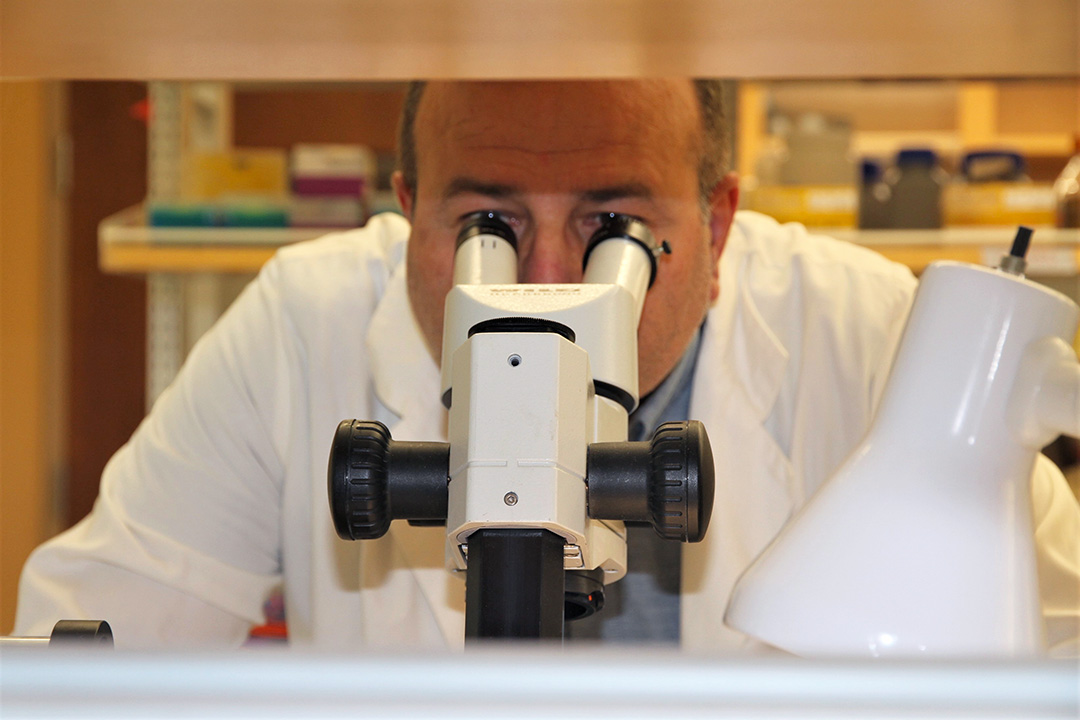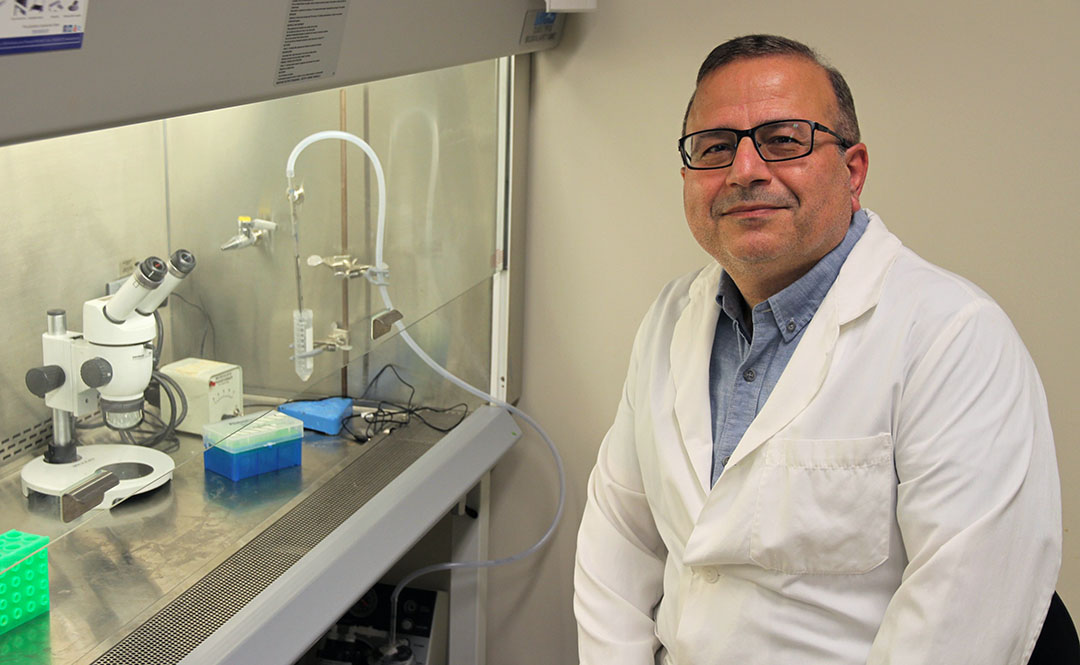
USask helps lead promising Parkinson’s disease research
Like many Canadians, Dr. Changiz Taghibiglou (PhD) has seen first-hand the devastating effects of Parkinson’s disease.
By James ShewagaBacked by promising new research, the University of Saskatchewan (USask) scientist is determined to help.
“My grandfather passed away from Parkinson’s and my elder brother is suffering from Parkinson’s right now, and one of my close friends who retired from here is also showing signs of Parkinson’s, so it is very common and taking care of these patients is very difficult and costly. But we can help,” said Taghibiglou, an associate professor of anatomy, physiology, and pharmacology in USask’s College of Medicine. “My ultimate goal is helping patients like my brother. If I can see that I can put a smile on a face of a patient and a caregiver, that is the reward.”
Taghibiglou’s promising new findings were recently published in the International Journal of Molecular Sciences. Building on the success of Taghibiglou’s concussion treatment technique published in 2018, his research team’s low field magnetic stimulation (LFMS) technique has now been proven effective in the fight against Parkinson’s in preliminary studies.

“This (research study) is proof of principle,” said Taghibiglou, who worked with former USask researcher Dr. Yanbo Zhang (MD, PhD) and his team from the University of Alberta, as well as with former USask post-doctoral researcher Dr. Sathiya Sekar (PhD and graduate Dr. Hajar Miranzadeh Mahabadi (PhD), and USask undergrad honours student Buettner Benson. “Our treatment slows down the degeneration and improves the quality of life and in some aspects of the disease it restores symptoms to almost a healthy condition. Movement and cognition improves significantly in the animal model.
“There is no cure for Parkinson’s and the current drug treatment just basically reduces the symptoms and gradually loses its effectiveness. So we need new measures and that is why this low field magnetic stimulation is so important. As far as I know, this is the first report of successfully using LFMS technology in an animal model of Parkinson’s disease.”
Next to Alzheimer’s, Parkinson’s is the most common neurodegenerative disease, affecting one per cent of adults over the age of 60 worldwide. Currently in Canada, more than 100,000 people are suffering from Parkinson’s disease, with 30 new patients diagnosed each day. The disorder mostly affects adults over the age of 60, with Health Canada projecting the number of Canadians living with Parkinson’s to double from 2011 to 2030.
“The rate of aging of the population is increasing, so this is becoming a bigger and bigger problem,” said Taghibiglou. “We will have more and more Parkinson’s patients, so we need to find effective new ways to treat them.”
Noted neurologist Dr. Alex Rajput (MD) – director of the Saskatchewan Movement Disorders Program and a professor in the College of Medicine – said Taghibiglou’s team’s new research is promising.
“This is exciting work, providing proof of concept that LFMS does not simply improve the motor findings, but actually improves the underlying brain pathology and even reverses changes in the brain,” said Rajput. “There is a big leap, however, from an intervention showing benefit in a rodent model (Parkinson’s disease does not occur naturally in animals) to demonstrating comparable benefit in humans. Taking the ‘bench to bedside’ approach of trying LFMS in Parkinson’s patients would require several logistical steps. However, I would be keen to pursue clinical research applications with Dr. Taghibiglou, with the appropriate supports.”
The next crucial step in the process for Taghibiglou is applying to the university’s Research Ethics Department for testing approval and for funding from research agencies to support small-scale human trials.
“Our goal is to start a small pilot study by recruiting a few patients at small scale,” said Taghibiglou. “The technology is proven and it’s harmless and we want to see if we can duplicate the same results in humans. It can be a complementary treatment, along with drug treatment, helping physicians and patients and caretakers, because using the technology doesn’t need hospitalization, it doesn’t need any nursing, or any specialists. The device is like a small laptop and can be used by patients themselves at home. The technology is easy to use and relatively inexpensive, but we need funding to begin a small-scale trial.”
Taghibiglou estimates he will need an initial grant of $200,000 to $300,000 to begin trials, and use that data to apply for full funding from the Canadian Institute for Health Research (CIHR) and the Natural Sciences and Engineering Research Council of Canada (NSERC), while also reaching out to the Parkinson’s Foundation and the Michael J. Fox Foundation For Parkinson’s Research.
While Taghibiglou’s newly published research focused on treating early stages of Parkinson’s, his team’s work has also proven particularly promising in treatment of chronic (advanced) stages of Parkinson’s disease, exciting new findings his team will share in the coming months.
“We are writing another study that we hope to publish within six months of an animal model of chronic disease and we show that we can improve symptoms significantly compared to our control group, so that is very exciting,” said Taghibiglou. “We had absolutely marvelous results, so that is what I think we can call a glimmer of hope for patients and family members and caretakers of people suffering from Parkinson’s. If we can help slow down the progress of the disease and restore some functions, it can make a real difference in people’s lives.”
Together, we will undertake the research the world needs. We invite you to join by supporting critical research at USask.
Article re-posted on .
View original article.
